|
|
|
Iwao Yamawaki
This elegant hard-backed catalogue comes replete with dust jacket on which Iwao Yamawaki’s famous 1931 photograph of soap bubbles is reproduced. As a young architect, Yamawaki left Japan at the beginning of the ’30s and went to Dessau to attend the Bauhaus school. Soon after he started to dedicate his energies to exploring different photographic techniques and it is to these works that this volume pays homage. A large proportion of his photographs were inspired by the architectural forms that so typify the Bauhaus. This can be seen in the images that depict the buildings in Dessau, Berlin, Chemnitz, and Stuttgart—including the Shellhaus in Berlin and the Cafè Kornhaus in Dessau. Also of great interest are his so-called “abstract photographs,” which he developed in the wake of work carried out by Laszlo Moholy-Nagy and Walter Peterhans. Examples include photographs whose subjects might be a Christmas tree bauble, the inner section of a red cabbage, or small wooden balls. This catalogue is the first published offering of photographic material relative to the artist’s Bauhaus sojourn.
Iwao Yamawaki, Scalo Verlag AG (Weinbergstrasse 22 a, Zurich, www.scalo.com), 2001, 150 pages, 32 x 34,5 cm.
|
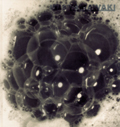
|
Doug Aitken – Diamond Sea
Diamond Sea is a publication from the “access/excess” series—edited for Book Works by Stefan Kalmár and also including volumes on Angela Bulloch, Janice Kerbel, and Nils Norman—by Californian artist Doug Aitken. Through an impressive array of high-quality photographs, Aitken documents a journey he made through the Diamond region—a 70,000 square kilometers stretch along the coast of the Namibian desert—which was inaccessible up until 1907. Enclosed within a computer-controlled perimeter fence, lie the world’s richest diamond mine and its oldest desert. The artist depicts both with extremely talented topographical documentation and lends a mysterious narrative spirit. In 1996, Aitken spent five weeks traveling and filming the Diamond Sea. The result of this footage was the video installation he presented in London’s Cubitt Gallery.
Doug Aitken – Diamond Sea, Book Works (19 Holywell Row, London, www.bookworks.org), 2000, limited edition of 1000 copies, 128 pages, 26 x 20,5 cm.
|
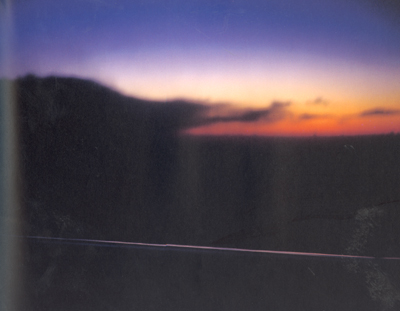
|
Victor I. Stoichita, A Short History of the Shadow
Following the publication in 1998 of L’invenzione del quadro in Italian, the same publishing house is now proposing a second work by writer Victor I. Stoichita. Professor in Modern and Contemporary History at the University of Freiburg (Switzerland), Stoichita is one of the world’s greatest authorities in art critical methodology, focusing on the compositional and psychological aspects of the work. In this text—first published in English in 1997—Stoichita considers the historic and artistic development of the shadow with clear, erudite arguments. How Pliny the Elder tells that the first painting was a tracing of the outline of a dark shadowy form onto a wall, whilst during the Renaissance, Leon Battista Alberti sustained that Narcissus was the inventor of painting. The last section of this Short History looks at the role that the invention of photography has played in the treatment and understanding of shadow. The book presents a panorama of how major movements from the start of the century to the present day have interpreted shadow, through an analysis of the ways in which various twentieth century artists have explored its effects in their work, such as Christian Boltanski’s installations and Andy Warhol’s series from the late ’60s, appropriately entitled “Shadows.”
Victor I. Stoichita, Breve storia dell’ombra. Dalle origini della pittura alla Pop Art, Il Saggiatore ( www.saggiatore.it), 2001, 255 pages, 14 x 22 cm.
|
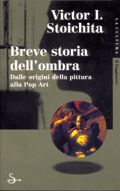
|
SchattenRisse. Silhouetten und Cutouts
This catalogue, edited by Marion Ackermann and published exclusively in German, provides an exhaustive survey of the cultural and artistic history of the silhouette, lending particular attention to an analysis of its fortunate renaissance in contemporary art. Schatten Risse considers the relationship between light and shadow, at times interpreted, in a variety of media from the nineteenth century to date. Works by a large variety of artists are explored in this context, including Christian Andersen, Christian Boltanski, Maggie Cardelùs, Marcel Duchamp, Johann Wolfgang Goethe, Hannah Höch, Jean Hubert, gen. Hubert- Voltaire, Jürgen Klauke, Johann Caspar Lavater, Jim Lambie, Georg Christoph Lichtenberg, Adolph von Menzel, Mario Merz, Paul Morrison, Julian Opie, Simon Periton, Pablo Picasso, Lotte Reiniger, Eva Rothschild, Philipp Otto Runge, Henry Fox Talbot, Kara Walker, and Andy Warhol. The book was published to complement to group exhibit of the same name held at the Lenbachhaus, Kunstbau in Munich.
SchattenRisse. Silhouetten und cutouts, Hatje Cantz (Hatje Cantz Verlag, Senefelderstrasse 12, Ostfildern, www.hatjecantz.de), 2001, 324 pages, 22 x 26 cm.
|
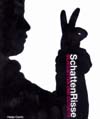
|
Lucinda Devlin. The Omega Suites
The title of this book is an oblique reference to the last letter of the Greek alphabet—metaphor and symbol of the end. And, in fact, this book collects together the photographic works of American artist Lucinda Devlin who, since the early ’90s, has been using her camera to immortalize the gas chambers, lethal injection rooms, electric chairs, and death cells found in small towns and large cities alike around the United States, in which country no publishing house was prepared to print this work. Devlin’s images are characterized by an obsessive scientific precision, sharp definition of shapes and outlines, and an almost clinical sterility in the treatment of atmosphere and light. The end result is a strong contradiction between the formal perfection of these death chambers and the ongoing existence of their tragic function.
Lucinda Devlin, The Omega Suites, Scalo Verlag AG (Weinbergstrasse 22a, Zurich, www.scalo.com), 2000, 80 pages, 25,5 x 29 cm.
|
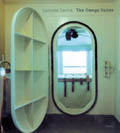
|
|
|
|